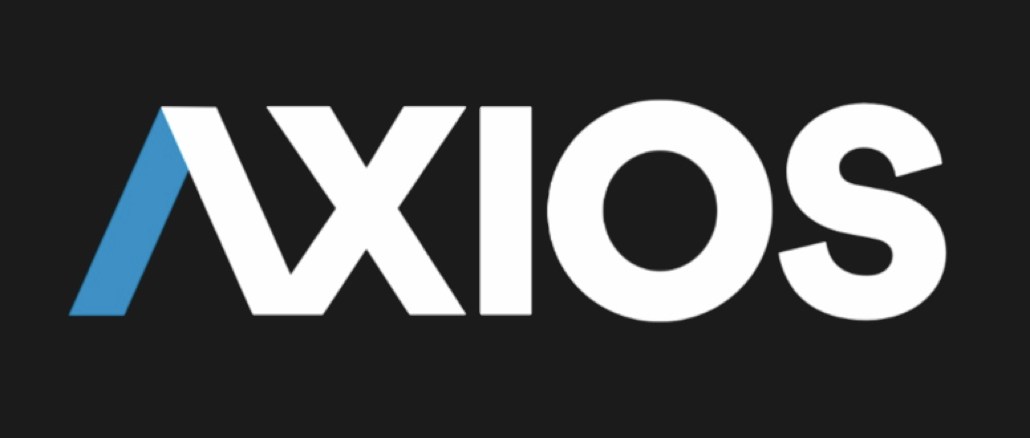Join us Dec. 1-3 in New Orleans for the Digiday Programmatic Marketing Summit

Jim VandeHei made waves late last year when he implied that subscriptions to Axios, his new venture-funded media startup, would cost as much as $10,000. But VandeHei has also been adamant that advertising will be a piece of the site’s revenue puzzle. Here, he and longtime colleague Roy Schwartz, who headed up Politico’s finances for nearly a decade, discuss the native ad format they’re selling to advertisers, their plans for video, site personalization, and how much any publisher can learn from experiments conducted during the recently concluded presidential election.
In some cases, their answers have been edited for brevity.
You both worked at Politico together for a long while, and you learned a lot about what works and what doesn’t. How much of that went into Axios?
Roy Schwartz: This all came about from us stepping away. Jim and I took several months off, and we went all over the place, to California and elsewhere, learning about how people consume content.
We learned so much, in fact, that now everybody that works here is entitled to a sabbatical. So much of the look and feel of this project came because we were able to step away.
You mentioned there’s a new twist on the native ad offering that allows people to adjust what they’re doing. Can you be more specific?
Jim VandeHei: Basically the differentiator on our platform is that every item is summarized on one shareable and saveable screen. Every piece of content basically has this same architecture. And because it’s short and it’s sweet, it allows you to use data in real time to figure out what’s working and what’s not working.
The ads that are visible in your newsletter feature very little text – the longer of the two ads in Mike Allen’s is barely 175 words long. Is that about how long Axios stories are going to be?
RS: We’re going to experiment. Not all of our stories will be that short – there will be a “read more” button – but as we learn, we’re going to share that information with our advertisers, too.
You’ve said in the past that native advertising, especially big, flashy packages, is built on a faulty premise. Can you explain how this solves that problem?
RS: The big problem with native advertising is you have to get a click. We don’t have to do that. We watch how much time an advertiser’s message stays in your feed. Depending on what resonates, an advertiser can change the creative accordingly, over the course of a reader’s numerous visits.
Does that personalization carry over to editorial as well?
RS: It will eventually. Not during this first phase, but as we begin to optimize what’s in our feed, we will start to curate what readers see based on what they’ve spent the most time reading.
It sounds like you took a lot of cues from Facebook in designing Axios. Is that fair to say?
RS: Yes we learned a lot from Facebook. The experience of reading news on a print newspaper is much better than visiting that same newspaper’s website. On a front page of print, you can look at a lot of news quickly, and you can decide what you want to read more of, and so on. On a site, that’s harder to do. We wanted our site to present people with a way to get a lot of information, quickly.
And how are you going to monetize video?
JV: I think the easiest way right now to monetize video in the serious-news space is to have it sponsored or presented by someone, as opposed to long, tedious pre-roll. A lot of our stuff we’re pushing is all about shorter, smarter, something I have time to watch and can engage with.
There are several launch sponsors that have video as part of their initial buy with us. I don’t know if any of those will be live on our launch date, but they will be live soon after.
You’ve mentioned Snapchat a couple of times. Why is Snapchat part of your mix?
JV: Over the last several months we’ve done an experiment partnership with NowThis, where we narrated the campaign and narrated the post-campaign politics and policy, and we learned a lot in that process. There’s a huge audience on Snapchat for that content. There’s nothing that’s dumbed down about “We the People.” To us, that was an eye-opener.
We’re not a big traffic play. We want traffic; we just want that traffic to come from people who care about serious news. We don’t want to do the stupid pet tricks necessary to jack up artificially high video traffic.
This election had a unique allure to it, though. How much of what you learned covering the election on Snapchat is going to be useful when trying to explain something about health care to a similar audience?
JV: It’s a really good question. It forces you to think differently about audience. Take health care, you’re not going to get a “We the People”-type audience. But if you think about Apple News, if you think about Facebook and Snapchat, there is a sub-segment that does care passionately about those topics. As long as you’re providing the content in a way that matches that ecosystem, you can create a large, loyal audience base. We don’t think we can get 20 million people consuming health care stuff, but in two years, we think we’ll be able to say, “This is how many people we think care about health care, and this is how many we reach.”
There’s a huge shift that’s taken place. There’s not one media ecosystem. There’ s multiple ones, and they all have unique characteristics that are changing constantly.
More in Media

Marketers move to bring transparency to creator and influencer fees
What was once a direct handoff now threads through a growing constellation of agencies, platforms, networks, ad tech vendors and assorted brokers, each taking something before the creator gets paid.

Inside The Atlantic’s AI bot blocking strategy
The Atlantic’s CEO explains how it evaluates AI crawlers to block those that bring no traffic or subscribers, and to provide deal leverage.

Media Briefing: Tough market, but Q4 lifts publishers’ hopes for 2026
Publishers report stronger-than-expected Q4 ad spending, with many seeing year-over-year gains.





